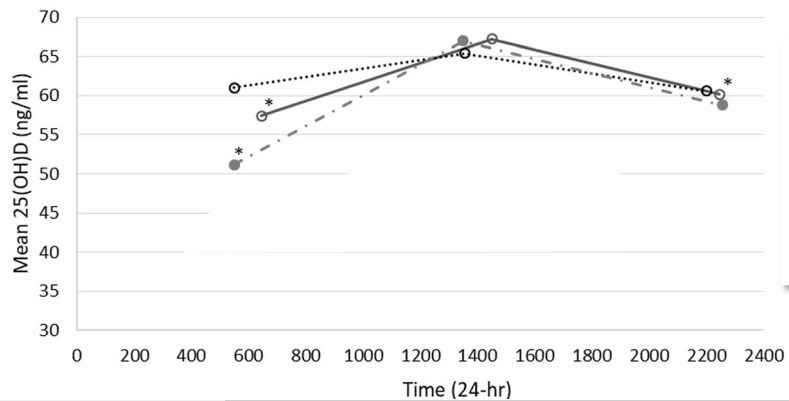What is a significant vitamin D level change: ~8 if at 30 ng, ~18 if at 50 ng
4 ng is a significant change @30ng in ideal conditions
~8 ng is a significant change @30ng in real-world conditions
Real World adds:
Only one pair of tests are made, not 3 pairs
The tests were made on different machine of the same brand
The tests are made by different operators
Tests are made using a different batch of reagents
The tests were taken at a different time of day
The blood was collected in different tubes
The variation in test results are realistically distributed (not Gaussian)
Tests were made on a different brand of machine
Least Significant Change (LSC) for Serum Concentrations of 25-hydroxyvitamin D
Preprint doi:10.20944/preprints202506.1092.v1
Pawel Pludowski Marek Wojcik % Maciej Jaworski L Agnieszka Ochocinska 1, William B. Grant 2 and Michael F. Holick 3
1 Department of Clinical Biochemistry, The Children's Memorial Health Institute, Warsaw, Poland
2 Sunlight, Nutrition, and Health Research Center, 1745 Pacific Ave., Ste. 504, San Francisco, CA 94109, USA
3 Section Endocrinology, Diabetes, Nutrition and Weight Management, Department of Medicine, Boston University School of Medicine, Boston, MA 02118, USA
- Correspondence: [email protected], [email protected]
Background: The Least Significant Change (LSC) should be introduced and considered as a proper method to define the smallest clinically important difference between two consecutive measurements.
Methods: The LSC was calculated based on 150 patients with a total 25- hydroxyvitamin D [25(OH)D] IDS-iSYS assay performed in triplicate. The LSC was determined by multiplying the calculated precision error by a factor of 2.77. The study group was additionally divided into subgroups according to gender, age, serum 25(OH)D concentration, and date of assays.
Results: The LSC was 4,0 ng/ml (13,2%) for the entire group (n=150; 450 assays) and was not dependent on gender, age of patients or the date of assays (p>0.05). The LSC value depended only on the 25(OH)D concentration value. In the subgroup with vitamin D deficiency (<20 ng/ml), the obtained LSC value was 2.2 ng/ml (14.7%) and was lower compared to all other groups (p<0.05 for insufficiency, and p<0.0001 for optimal concentration value).
In the subgroup with 25(OH)D concentration >50 ng/ml (n=4; 12 assays), the calculated LSC was 11.8 ng/ml (16.9%) and differed statistically only from the subgroup with vitamin D deficiency (p<0.005).
Conclusion: An absolute LSC of 4.0 ng/ml was calculated for the IDS-iSYS assay used in our study, and should be considered when two (or more) assay results of 25(OH)D performed for a single patient are compared.
See also Vitamin D Life
Vitamin D test result can vary by 40 ng (10 reasons) – July 2024
Huge differences between Vitamin D test results: CLIA, LC-MS, and home – June 2024
4 popular vitamin D testers gave very different results (no surprise) – June 2021
Vitamin D testing accuracies, including dried blood spot – Jan 2020
Vitamin D levels observed to vary by 20 percent during a day – Feb 2019
Vitamin D measurements vary from the same blood sample – March 2014
Huge variation in Vitamin D test results between 4 testers for 8 people – 2013
Perplexity searches were made in preparing this page
📄 How is Least significant change defined



